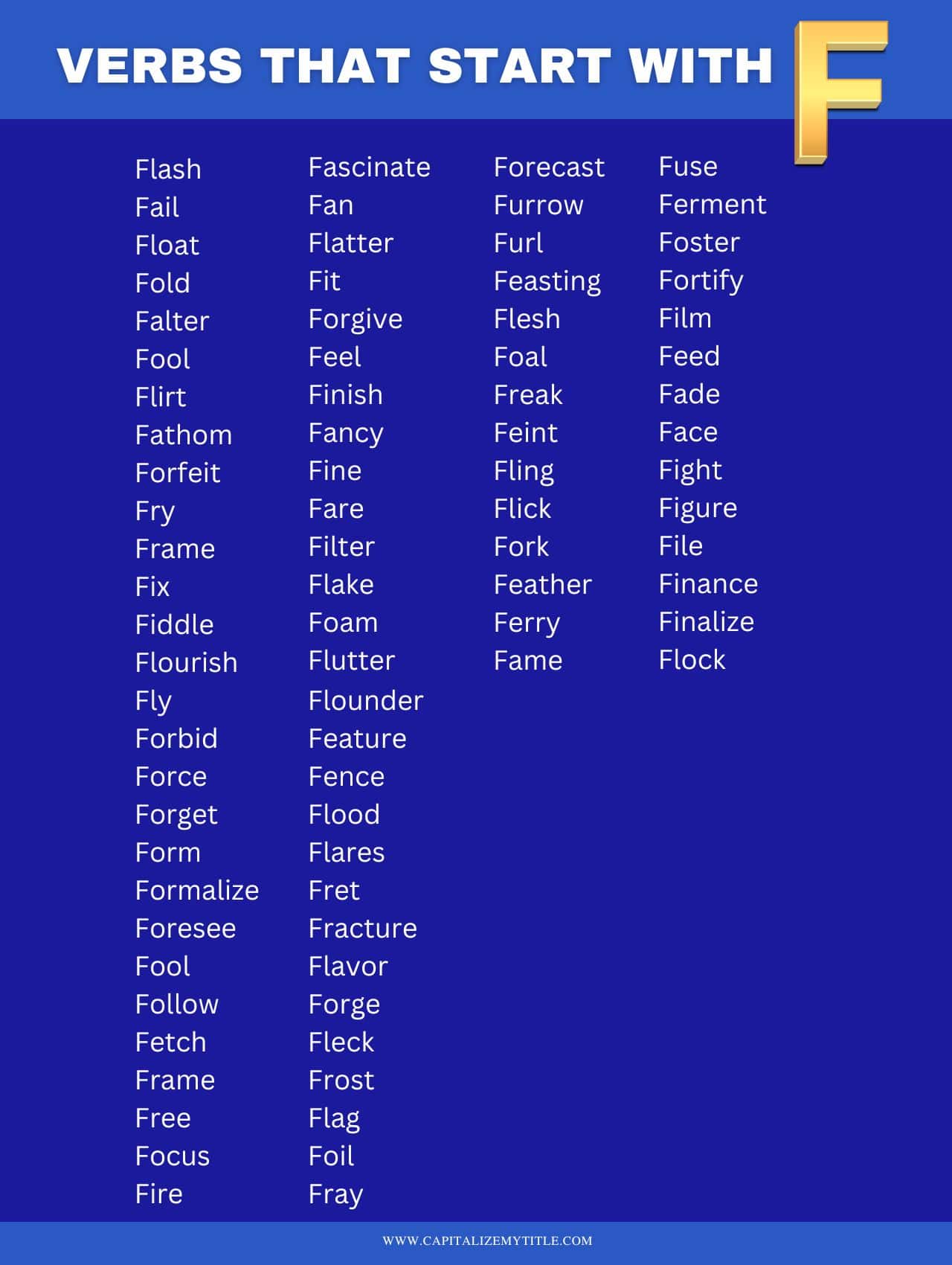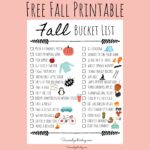Verbs That Start With F
1. Fall
2. Feed
3. Feel
4. Fight
5. Find
6. Finish
7. Fix
8. Fly
9. Follow
10. Forget
11. Forgive
12. Freeze
13. Function
14. Fund
15. Furnish
16. Fear
17. Figure
18. Focus
19. Frown
20. Fuse
21. Filter
22. Flash
23. Flirt
24. Flow
25. Fold
26. Fuel
27. Float
28. Fumble
29. Funk
30. Fabricate
More About
Welcome to the fascinating world of verbs that start with the letter F! This collection of verbs is as diverse as it is exciting, offering a multitude of options to add depth and variety to your writing. Regardless of whether you are a seasoned writer or just beginning your journey into the realm of words, discovering and implementing verbs that begin with F can infuse your prose with vividness and capture the imagination of your readers.
Verbs are the backbone of any sentence, as they express the action or state of being. By incorporating verbs that start with F, you can enhance your writing by introducing a range of emotions, actions, and descriptions. From actions that are forceful and dynamic to those that evoke feelings of appreciation or gratitude, these verbs offer versatility and richness to your textual creations.
The F-verbs encompass a broad spectrum of actions, covering physical movements, mental states, emotional expressions, and the interactions between individuals. You will find verbs like “frolic,” which paints a picture of joyful and playful movement. On the other hand, verbs like “frown” capture a mood of disapproval or concern. As you navigate through the world of F-verbs, you will encounter action words that embody courage, such as “face,” indicating the act of confronting challenges head-on. These verbs not only inject vitality into your writing but also enrich the overall meaning and impact of your words.
Additionally, verbs that begin with F possess an inherent sense of flair and forcefulness. Consider words like “flourish,” “flame,” or “flash.” Each of these verbs adds a touch of drama and intensity to your writing, immediately captivating the attention of your readers. Whether you are writing a thrilling novel, an engaging blog post, or a heartfelt poem, these verbs will help you summon the desired tone and energy in your work.
Furthermore, by integrating F-verbs into your writing, you can engage your readers on a visual and sensory level. Verbs such as “flit,” “float,” or “flicker” evoke vivid images and sensations, allowing your audience to immerse themselves in the world you create through your words. By skillfully employing these verbs, you breathe life into your descriptions, enabling readers to vividly visualize the scenes you paint.
As a writer, it is essential to continuously expand your repertoire of verbs. By incorporating a variety of F-verbs into your writing, you offer your audience an enriched reading experience. The ability to choose the right verb at the right moment is a skill that allows you to convey your ideas with precision, elegance, and power.
In conclusion, verbs beginning with F introduce a treasure trove of possibilities for writers seeking to elevate their craft. They infuse your writing with vividness, intensity, and impact, inviting readers to embark on a journey through your words. So explore the vast array of F-verbs and embrace the dynamism they bring to your work. Whether you choose to frolic or frown, flourish or flame, these verbs will undoubtedly breathe life into your writing, captivating your readers and leaving a lasting impression.
FAQs:
FAQ – Verbs starting with F
1. Q: What is the meaning of “fascinate”?
A: “Fascinate” means to captivate or attract someone’s interest or attention intensely.
2. Q: How to “foster” a sense of belonging?
A: You can “foster” a sense of belonging by creating a welcoming and inclusive environment where everyone feels valued and included.
3. Q: What does it mean to “forgive”?
A: “Forgiving” means to let go of resentment or anger towards someone who has wronged you and offering them pardon or absolution.
4. Q: How to “facilitate” effective communication?
A: To “facilitate” effective communication, you can encourage open dialogue, actively listen, and provide the necessary tools and resources for efficient interaction.
5. Q: What is the purpose of “filtering” information?
A: “Filtering” information helps to separate relevant or important details from unnecessary data, emphasizing desired aspects, and eliminating distractions.
6. Q: How do emotions “fluctuate”?
A: Emotions “fluctuate” when they continuously change or vary in intensity, often influenced by external factors or personal experiences.
7. Q: What does it mean to “formulate” a plan?
A: “Formulating” a plan involves developing or creating a detailed strategy or course of action to achieve a specific goal.
8. Q: What is the importance of “framing” a problem?
A: “Framing” a problem helps to define or structure its context, enabling a better understanding, approach, and generation of potential solutions.
9. Q: How can one “forge” strong relationships?
A: One can “forge” strong relationships by investing time and effort, being trustworthy, being a good listener, and showing genuine care and support.
10. Q: What does it mean to “follow” instructions?
A: “Following” instructions refers to adhering to the given guidance or direction precisely, ensuring accuracy and completion of the assigned task.


















